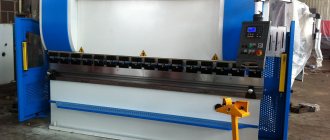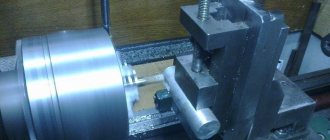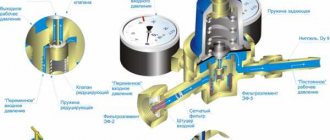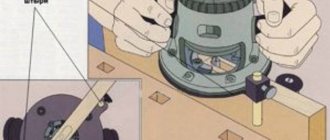Lifting mechanisms are in demand not only in warehouses and production workshops. There are also situations in everyday life when an object cannot be lifted or moved from its place without the use of additional equipment. Manually operated devices come to the rescue. They do not require a network connection and are suitable for solving various household and business problems. On chalka.com.ua you will find all types of equipment described in this article.
Rigging work
Any operations related to moving, holding, lifting or lowering various types of objects - equipment, accessories, components, machinery, etc. - relate to rigging work. Their fundamental difference from traditional loading and unloading operations is the use of special equipment that facilitates the performance of the listed operations.
Often technical devices have an unusual configuration. Their use is based on the impossibility of performing work in any other way. That is, without such equipment, workers will not be able to move, lift or lower the load. The cost and timing of contracted services are determined by the nature of the cargo and the complexity of the operations.
Safety during rigging work
Although only trained and medically cleared employees are allowed to perform rigging work, they are given workplace safety training when working on a new facility. Besides:
- knowledge of methods for moving heavy loads is tested when issuing a permit for rigging work;
- Before work, all rigging devices are checked;
- the work site is fenced with warning tape and, in the dark, with signal lights;
- When working at height, safety equipment is used.
Measures to ensure the safety of work are described in the operational plan, which all participants in rigging work must familiarize themselves with.
What is rigging equipment and its purpose
Rigging equipment includes all mechanisms that are used to transport large and heavy cargo. The task assigned to this type of equipment is not to completely or partially replace a person, but to increase the productivity and efficiency of manipulations.
Rigging services are popular in industrial enterprises. Cargo moving specialists using special equipment will quickly relocate workbenches, conveyors, machines, bunkers and other equipment used in production. Special equipment also improves labor safety and the safety of the transported object.
Operations for moving various types of cargo are an integral element of any production process. However, rigging equipment is used not only in industry. Special equipment is often in demand in the consumer services sector. For example, transporting furniture, large safes, bulky musical instruments, etc. Here, too, you cannot do without the services of specialized companies.
Manual hoists
Cheap and easy-to-operate lifting equipment includes a hoist with a manual drive. The device allows you to lift scales up to several tons. The mechanism can be easily maintained by one person.
There are two types of manual hoists:
gear - the design of the mechanism includes two chains. One is used directly for hanging and securing the load, and the second chain is provided to control the lifting mechanism;
lever - to control the load, a lever is provided, which is installed on the device body. The operator must remain close to the mechanism during operation. The manual hoist is suitable for use in confined spaces (tight garage, well).
Ropes
Strong hummocks are used - nylon, hemp or steel. Hemp ropes can be tarred or bleached. The main difference between them is the production technology. Resin-impregnated threads are more practical and, accordingly, more in demand due to their high strength.
At the same time, white ropes have better flexibility. They have significantly less strength and therefore are not used in power-driven mechanisms. In general, during installation they are used very rarely.
Cables made of steel have different cross-sectional shapes. They are classified depending on their design features. In rigging, as a rule, flat and round cables are used with a lay made of one, two or three cables.
Slings and jacks
The devices are short ropes of various configurations. They can be electronic or manual, and are used directly during loading and unloading operations. The maximum lifting height in this case is 3 meters. The maximum permissible weight of cargo that can be lifted using slings is 10 tons.
If you need to lift a heavy load to a small height, then jacks are used. They differ in lifting methods and are mechanical, hydraulic, pneumatic; screw, wedge or rack.
Jacks
The device is suitable for lifting loads to a small height. The key feature of the jack is that it is installed on the floor. This eliminates the need for chains and ropes. The device is also highly mobile - if necessary, it can be quickly moved to another place.
Options for using a jack in everyday life:
- lifting heavy building materials and large blocks when performing repair and construction work;
- lifting the car body to change wheels or perform repair work.
- use as a lift for lifting and placing heavy parts on supports.
When choosing a jack, you need to consider the maximum lifting height. The indicator varies from 30 to 50 cm.
Support structures
Sometimes situations arise when a load needs to be lifted and held in this position for a certain period of time. Support elements that can withstand heavy loads are required. Most of them are a vertical metal support with guy wires. At its lower part there is a massive concrete slab as a support.
If the object being lifted is relatively light in weight, then a hoist can be used. When working indoors, they are fixed to ceilings or other durable building structures.
Types of rigging devices and means
The variety of types of loads that need to be moved requires a wide range of rigging equipment for moving loads, designed to make the work of riggers easier, more productive and safer. Rigging equipment is classified in various ways, but the most commonly used system is in which it is divided into:
- rigging equipment - cables, slings, blocks, pulleys, support structures;
- rigging devices – masts, portal lifts, chevres;
- rigging mechanisms - winches, jacks, dollies.
Mounting masts, portal lifts, chevrons are rarely used - during the installation of special large-sized structures, and rigging tools and mechanisms are constantly used by companies specialized in lifting and moving large-sized and heavy cargo. The range of rigging equipment includes:
- steel cables are woven around a hemp or steel core made of galvanized wire, while synthetic cables are made of polyamide, polyester, polyethylene or polypropylene. Rigging cables most often consist of 6 strands twisted around a core impregnated with an anti-corrosion compound that prevents corrosion from getting between and inside the strands when the cable is bent. Current standards classify cables according to more than 10 characteristics, but the main indicators of a cable are diameter and flexibility. The diameter of the cable can be from 1.9 to 27.5 mm, and they are woven from 42 or 144 wires with a diameter of 0.2 to 3.2 mm (accordingly, each strand has 7 or 24 wires). The flexibility of the cable increases with the number of wires;
- slings - pieces of steel or synthetic cable, polyester textile tape, chains connected in a ring or with devices attached to the ends that allow you to quickly and safely secure the load. To connect cables and make loops in the manufacture of slings, clamps and clamps are used to secure stamped or cast thimbles intended for installing a hook, as well as to prevent flattening of the cable and delamination of strands at bend points. Two, four or more lightweight hook and loop slings attached to one eyelet form multi-leg slings. Slings can be self-balancing, semi-automatic, they are used in the manufacture of many types of traverses for rigging;
- pulleys and blocks are used to move and change the direction of the load. Blocks can be single- or multi-role. Single-roller blocks are most often used as outlet blocks and for lifting light loads, while multi-roller blocks are used to lift loads of significant mass. The rollers rotate on an axis fixed to the cheeks, on which the hook and earring are installed. The blocks are equipped with devices that prevent the cable from slipping. The traction force can be reduced using a pulley, consisting of a movable, fixed and retractable block, through which the running cable is connected to a winch, hoist or other mechanism. The running cable can come from both a movable and a fixed block, and the number of threads in the pulley can be both even and odd;
- support structures are required during rigging work with equipment that needs to be raised to a certain height and maintained in this state for some time. In accordance with the mass of the cargo being moved, it can be fixed at the required level using a mounting mast secured with guy ropes, a rigging portal equipped with hoists with a manual or electric drive, and when working with heavy equipment, a steel frame on hydraulic racks is used, capable of lifting and hold the massive load in this position until the design fasteners are installed;
- jacks make it possible to increase the efficiency of rigging operations when lifting loads to a small height. Its main difference is that it is located under the load, which allows you to do without various load-handling devices. The following jacks are used in rigging work:
· hydraulic , converting the pressure of the working fluid into mechanical movement. To do this, after lifting the pump plunger with the lever, the working fluid fills the chamber under it, and when lowering, the plunger increases the pressure in the chamber, opens the check valve, ensuring the flow of working fluid into the container under the piston, which moves upward. Raising and lowering the lever repeats the cycle, extending the rod and lifting the load. The positive properties of hydraulic jacks include:
- high efficiency;
- load capacity up to 200 tons;
- smoothness of rise;
- low applied force;
- compact and stable design.
A hydraulic jack is used in some cases as an independent unit, and in others - as an element of supporting structures and other types of rigging equipment;
· pneumatic, which are inflatable cushions made of reinforced elastomeric or rubber-cord materials, with a load capacity of up to 20 tons. These jacks are distinguished by:
- light weight and minimal thickness in transport position (20 – 25 mm);
- high puncture resistance and abrasion resistance;
- ease of organizing a position for pump installation and operation;
- ease of operation.
Several pneumatic jacks are combined into a single network with a source of compressed air (compressor, compressed air cylinder, factory compressor room), ensuring synchronous operation of all jacks. Low working pressure (from 0.6 to 0.8 MPa) ensures safe work.
· rack and pinion are designed for work in cramped conditions when it is impossible to use electrically driven mechanisms. A rack jack consists of a steel body with a gear rack moving inside it, at the upper end of which a support head for a load is fixed, and at the lower part there is a bent arm used for lifting low-lying loads. The rack moves up and down as the handle rotates, transmitting force to the gear train. On the same shaft with the handle there is a ratchet wheel, resting against the teeth of which a pawl attached to the body fixes the position of the rack. Rack jacks have:
- simplicity of the device and its reliability;
- unpretentiousness when working in difficult conditions;
- smooth lifting of the load to the required height using the handle.
Rack jacks can be used for work in vertical and horizontal positions. They are capable of lifting up to 20 tons on a support and 14 tons on a paw with a lifting height of up to 0.34 m;
· screw, the main element of which is a screw with a trapezoidal thread, rotating in a fixed nut welded into a steel body. At the top, the screw has a square cross-section, where a handle is installed that rotates the screw, and a cup is also hinged to support the load. The handle is equipped with a ratchet (a ratchet wheel with a double-sided pawl), which simplifies the work with the screw jack in cramped conditions. Screw jacks are capable of lifting loads weighing up to 20 tons to a height of up to 0.29 m.
6. Winches are used to move loads horizontally and lift them vertically by rotating the handle in places where the use of specialized rigging equipment is not possible. The handle rotates the spur gears of an open two-stage gear train or a worm pair with a friction brake. Hand winches:
- able to work in any direction;
- reliably protected from overload;
- work with a cable of any length.
An electric drive and replacing the brake with a shoe or disc brake with a safety clutch turns a manual winch into an electric one.
Safety
When rigging work you have to deal with very large and heavy objects. Their mass can be measured in tons. Therefore, safety rules were developed and implemented to regulate the operation of rigging equipment, mechanisms and devices.
The requirements take into account all sources of danger and recommend methods for their prevention when performing manipulations. Employees of a company that provides rigging services are required to undergo training. Refresher courses are periodically organized for them. To be allowed to perform work, you must undergo a medical examination.
equipment requirements
Systematic inspection of rigging devices, mechanisms and other equipment is a prerequisite for maintaining its performance and safe operation. Time limits are set for the inspection. For example, traverses are checked twice a year, pincers and grips are checked monthly, slings are checked once a decade (with the exception of those that are rarely used).
In addition, an extraordinary inspection of working equipment is also provided. It is carried out after completion of the repair of metal components and parts; in cases of reconstruction, major repairs or other similar operations. The results of the inspection are recorded in a special journal. After replacing the ropes, the reliability of the fastenings and the correctness of the reeving are checked.
Technical examination is carried out by an engineering and technical worker who is assigned supervisory responsibilities. The presence of a company employee responsible for the technical condition of rigging, devices and mechanisms is required. The responsible employee can independently check the reeving and reliability of the ropes. This will only increase the degree of safety when performing rigging work.
Safety precautions
During rigging, slings are used to secure the load to the lifting mechanism. Before adding slings, you need to determine the weight of the load. For the most part, this indicator is indicated in the passport - a metal plate attached to one of the sides of the object; or in accompanying documents. If the cargo is packaged, then such data is written directly on the packaging material or the lining of the box.
When lifting and moving cargo, strictly adhere to the following rules:
- If a passport or accompanying documentation is attached to the cargo, then slinging is carried out in strict accordance with the manufacturer’s recommendations. Fastening of the slings is carried out exclusively at the eyes using special hooks, which are provided on the rigging equipment.
- When slinging, it is important to achieve complete balance and stability of the load. Equipment and additional mechanisms, arranged on a common frame, are lifted together after the slings are secured to the common platform. Sheet materials, combined into packages, are lifted with special lifters, which are attached to the traverse.
- For slinging long products - corners, profiles and others - special universal devices are used. At sharp corners, pads are installed under the slings.
Hand winches
The device is used to move the load horizontally. This is the difference between a manual winch and a hoist.
According to the type of design, hand winches are divided into two types:
- lever - there is a lever on the body of the device, which provides traction force. The design consists of a steel frame. A mechanism (ratchet) responsible for fixing the cable is hidden inside it;
- drum - equipped with a drum for winding the cable and a handle. In terms of traction force, the drum winch is inferior to the lever mechanism. On most models, the figure is limited to one ton.
Classification of objects
All transported cargo is divided into several groups depending on weight:
- Lightweight - up to 250 kg.
- Heavy: more than 250 kg, but less than 50 tons.
- Heavy - over 50 tons.
It is customary to distinguish a fourth group of cargoes. The so-called “dead” are loads that are dug into the ground, frozen, attached to the foundation or pressed by another load. There is no data on such cargo, including weight. Cranes are not used to lift them: this is prohibited. Objects are usually classified by size - they are divided into dimensional and oversized.
Dimensions do not exceed the limits established by traffic rules and can be moved on the roads without restrictions. Oversized objects, on the contrary, have dimensions exceeding the permissible ones. Their transportation requires special permission, coordination of the route, transportation time, and additional escort.
Types of rigging work
Classification of rigging work is carried out according to various criteria, incl. and according to their complexity:
- simple, allowing you to do without the use of specialized equipment;
- medium complexity – moving cargo weighing up to 20 tons using manual rigging equipment;
- complex, requiring the movement of heavy and oversized cargo weighing more than 50 tons using various types of equipment and various rigging technologies.
Moscow-St. Petersburg will produce within the agreed time frame and with high quality:
- relocation of a manufacturing plant;
- delivery of heavy and/or oversized cargo;
- installation and dismantling of technological equipment;
- loading and unloading operations with cargo of any weight and size;
- lifting heavy and/or oversized cargo to heights.
Our employees have the knowledge, skills and experience to perform rigging work of any complexity!











